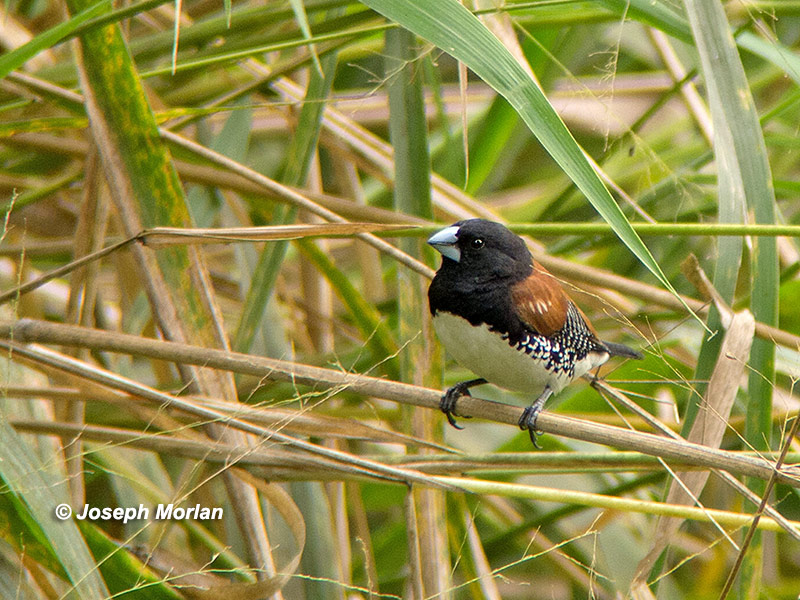
These were fairly common in small flocks foraging on the lawn. They are frequent victims of brood parasitism by indigobirds. This species is divided into two distinct groups, a black backed group to the west and a chestnut backed group to the east. This is a member of the chestnut backed group which is considered by the IOC and by Birdlife International to be a separate species, the Red-backed Mannikin. Early versions of Clements also split this bird under the name Brown-backed Munia. However back color reportedly varies clinally within some groups and most other authorities have not accepted this split.
The species is usually grouped with other Mannikins in the genus Lonchura, but HBW, Clements (starting with the 5th edition) and eBird have adopted the genus Spermestes instead. These birds are in the Waxbill (Estrildidae) family, a large group of old-world finch-like birds. The English name "Mannikin" should not be confused with "Manakin" which is a family (Pipridae) of unrelated tropical American birds.
Digiscoped with Panasonic DMC-LZ5 | Nikon FieldScope III | 30XWA | hand-held (no adapter)